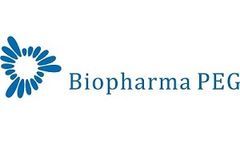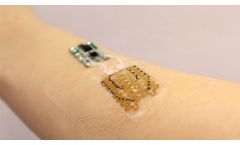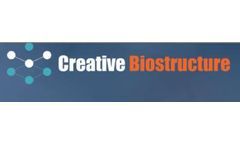Refine by
Drug Delivery Articles & Analysis: This-Year
21 articles found
Virus-like particles (VLPs) have garnered significant attention in recent years for their potential applications in vaccine development, drug delivery, and as tools in various biotechnological fields. These nanoparticles mimic the structure of viruses but lack the viral genetic material that makes viruses infectious. ...
One notable application of chemical synthesis is in the development of lipid conjugates used in drug delivery systems. Researchers can design lipids with specific hydrophilicity and hydrophobicity, enhancing the bioavailability and targeting capability of therapeutic agents. ...
Whether it is medical research or drug manufacturing, tablet press is a vital link. Let's see how to choose the one that suits you best.Grand pack.The field of drug delivery is constantly evolving, driven by the core goal of improving therapeutic outcomes—enhancing efficacy, reducing toxicity, boosting patient compliance, and even enabling ...
This article explores the mechanisms, benefits, challenges, and future prospects of PEGylation in drug development. Mechanism of PEGylation PEGylation involves the covalent or non-covalent attachment of PEG—a synthetic, hydrophilic polymer—to a drug molecule. ...
In cancer research, engineered enzymes are being explored to activate prodrugs locally at the tumor site, minimizing systemic toxicity—a testament to the intersection of enzymology and drug delivery innovation. Environmental and Industrial Waste Management Sustainability in biotechnology increasingly hinges on application of enzymes in wastewater ...
In our last blog, Peter discussed how AI is accelerating the drug discovery process and putting pressure on chemists, who must find ways of developing these potential drugs for subsequent testing or production. ...
ByBUCHI
As treatment strategies advance researchers regularly update drug delivery systems. Traditional drug delivery systems consist of liposomes and polymer micelles together with nanoparticles but despite their inclusion in clinical trials current versions still encounter limitations. ...
The MDCK permeability assay is a critical technique employed in pharmacology and drug development to evaluate the permeability of drug candidates across epithelial cell layers. ...
Research Tools: Researchers utilize single-domain antibodies in various applications, such as protein purification and label-free detection systems, due to their ability to bind specific targets with high affinity. Targeted Drug Delivery: Their small size allows them to be conjugated with drugs or therapeutic agents for targeted ...
This property, known as bioactivity, makes it an ideal material for a wide range of medical applications, including bone repair, dental restoration, and even drug delivery. Composition and Properties Bioglass is primarily composed of silica (SiO2), sodium oxide (Na2O), calcium oxide (CaO), and phosphorus pentoxide (P2O5). ...
ByMatexcel
Recent advancements focus on enhancing its performance in tissue engineering and drug delivery systems. For instance, HA-based scaffolds are being developed to promote bone regeneration, while HA nanoparticles are engineered to deliver drugs directly to cancer cells, minimizing side effects. ...
ByMatexcel
Watertown, MA – March 24, 2025 – Biopharma PEG, a leading supplier of high-quality polyethylene glycol (PEG) derivatives, highlights its innovative product DSPE-PEG-Mannose, an advanced biomedical polymer with significant potential in drug delivery, tumor-targeted therapy, tissue recognition, and adhesion.Structural Advantages of DSPE-PEG-MannoseDSPE-PEG-Mannose ...
As the new year begins, many people prioritize their health by scheduling annual physicals and medical check-ups. While these routine exams ensure overall well-being, few realize the crucial role that fluoropolymers play in modern medical technology. From diagnostic tools to life-saving devices, fluoropolymer materials contribute significantly to patient safety, hygiene, and the accuracy of ...
These materials are extensively utilized in drug delivery systems, tissue engineering, and regenerative medicine. ...
The evolution of 3D printing technology has opened up new avenues in the pharmaceutical industry, especially in the fabrication of novel drug delivery systems. One such advancement is the 3D printing of Oral Thin Films (OTFs), which are ultra-thin films used to deliver drugs via oral mucosa. ...
Plastics maintain sterility with packaging and gloves, enable precise drug delivery through syringes, and are critical in life- saving equipment like heart valves and dialysis machines. ...
In addition, exosomes themselves are being investigated as drug delivery vehicles due to their ability to carry specific biomolecules. By manipulating the lipid and metabolic content of exosomes, researchers aim to enhance the specificity and efficacy of drug delivery systems. Another exciting area of research is the potential ...
In the field of medical device manufacturing, the materials used in creating life-saving equipment must meet the highest standards of safety, reliability, and performance. Among these materials, fluoropolymer tubing has emerged as a critical component, playing a crucial role in various medical devices. Whether it’s for intravenous (IV) systems, catheters, or diagnostic equipment, ...
Pharmaceuticals: In medicine, lysozyme has been formulated into treatments for infections, inflammation, and even wounds due to its bactericidal and anti-inflammatory properties. It is also employed in drug formulations to enhance drug delivery systems by breaking down bacterial barriers in target tissues. ...
This article explores the profound impact of nanotechnology on drug delivery systems and its correlation with formulation development services Enhanced Drug Delivery and Targeting One of the most significant contributions of nanotechnology to pharmaceutical formulations is its ability to enhance drug ...














